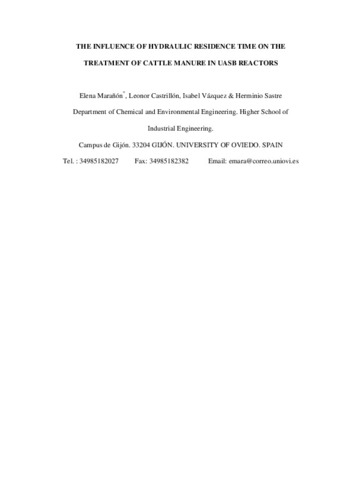The influence of hydraulic residence time on the treatment of cattle manure in UASB reactors
Autor(es) y otros:
Palabra(s) clave:
Farms
Cattle manure
Anaerobic treatment
Upflow anaerobic sludge blanket (UASB)
Fecha de publicación:
Editorial:
Sage
Versión del editor:
Citación:
Descripción física:
Resumen:
Cattle manure from farms in the autonomous community of Asturias, Spain, was characterised and subsequently treated, after filtration through a 1 mm sieve, in upflow anaerobic sludge blanket laboratory reactors. The volume generated per cow and day varied between 50-55 litres (obtained through a survey of 400 farms), the manure being used on Asturian farms up until now as a fertiliser. After screening, the COD of the manure employed varied between 33,000 and 56,000 mgO2 l–1. The highest percentage of COD removal obtained was 75.5% for a hydraulic residence time of 22.5 days. Gas production varied between values of 0.20-0.39 m3gas.kg–1 COD removed, with a methane content of up to 64%. There was a fraction refractory to biodegradation of 11%.
Cattle manure from farms in the autonomous community of Asturias, Spain, was characterised and subsequently treated, after filtration through a 1 mm sieve, in upflow anaerobic sludge blanket laboratory reactors. The volume generated per cow and day varied between 50-55 litres (obtained through a survey of 400 farms), the manure being used on Asturian farms up until now as a fertiliser. After screening, the COD of the manure employed varied between 33,000 and 56,000 mgO2 l–1. The highest percentage of COD removal obtained was 75.5% for a hydraulic residence time of 22.5 days. Gas production varied between values of 0.20-0.39 m3gas.kg–1 COD removed, with a methane content of up to 64%. There was a fraction refractory to biodegradation of 11%.
ISSN:
Colecciones
- Artículos [37534]
- Ingeniería Química y Tecnología del Medio Ambiente [354]
Ficheros en el ítem




